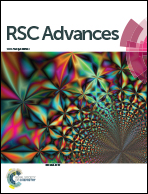The binary aluminum scandium clusters AlxScy with x + y = 13: when is the icosahedron retained?
Abstract
Geometrical and electronic structures of the 13-atom clusters AlxScy with x + y = 13, as well as their thermodynamic stabilities were investigated using DFT calculations. Both anionic and neutral isomers of AlxScy were found to retain an icosahedral shape of both Al13 and Sc13 systems in which an Al atom occupies the endohedral central position of the icosahedral cage, irrespective of the number of Al atoms present. Such a phenomenon occurs to maximize the number of stronger Al–Al and Sc–Al bonds instead of the weaker Sc–Sc bonds. NBO analyses were applied to examine their electron configurations and rationalize the large number of open shells and thereby high multiplicities of the mixed clusters having more than three Sc atoms. The SOMOs are the molecular orbitals belonged to the irreducible representations of the symmetry point group of the clusters studied, rather than to the cluster electron shells. Evaluation of the average binding energies showed that the thermodynamic stability of AlxScy clusters is insignificantly altered as the number y goes from 0 to 7 and then steadily decreases when y attains the 7–13 range. Increase of the Sc atom number also reduces the electron affinities of the binary AlxScy clusters, and thus they gradually lose the superhalogen characteristics with respect to the pure Al13.



 Please wait while we load your content...
Please wait while we load your content...